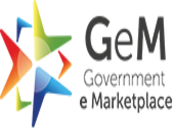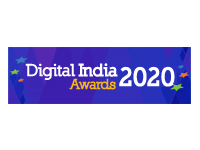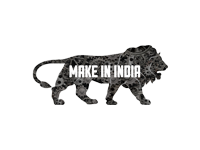Sreedevi Ravindran
Scientist 'G'
Department of Scientific & Industrial Research
Technology Bhawan, New Delhi-110016
Email: srv[at]nic[dot]in
ABSTRACT
Describes the objectives and projected activities of the Virtual Information Centre going to be set up at Turkapally, Hyderabad through the collaboration of NISSAT with ICICI National Park. NISSAT has awarded a project to National Chemical Laboratory, Pune for encoding and decoding of graphical chemical structure as commercial barcodes. The aims of the project are listed. Recognizing the importance of a database of Indian S&T experts, NISSAT prepared details for developing the said database and identified INFLIBNET (an Inter-University Centre of UGC) Ahmedabad as the agency for implementing the project. The duration of the project is two years. The issues that will be taken care for developing the database and sources covered for gathering the information have been indicated.
KEYWORDS: Barcodes; Decoding; Encoding; Graphical chemical structure; ICICI National Park, India; INFLIBNET; National Chemical Laboratory, Pune; NISSAT; S&T experts; Virtual Information Centre.
VIRTUAL INFORMATION CENTRE
NISSAT entered into an agreement in March 2001 with ICICI Knowledge Park*, a not-for-profit company to set up a Virtual Information Centre (VIC) at Turkapally, Hyderabad.
ICICI Knowledge Park is presently engaged in developing a knowledge network that would facilitate collaboration between sci-tech, academic and research institutions and the industries in the country, particularly those having their R&D facilities at ICICI Knowledge Park campus at Turkapally, Hyderabad . Setting up an information centre is crucial to the development of this knowledge network.
Objectives
The main objectives of the proposed project is to set up a VIC that would
- act as an electronic platform for fast and reliable access to information and interaction among industry, academia and public research institutions on science and technology;
- provide a gateway to existing information centres;
- provide fast and reliable access to national and international S & T information/databases to network users;
- function as a data access and switching centre for facilitating collaborative research;
- develop interface between Park tenants and member organisations for sharing of resources and exchange of ideas; and
- strengthen the resource base of information available in the country.
Initially the Centre would focus on areas like biotechnology, pharmaceuticals, chemicals, new materials and IT/telecom. The thrust would be to work in a networking mode ensuring optimal use of existing resources.
There would not be any conventional library; instead, a VIC would facilitate database and switching. The VIC would have some of the oft-used databases on CD or electronic media. Besides, information as and when required would be obtained from partner institutions, other Indian and foreign sources to cater to the users. The VIC would also endeavour to create databases of interest through decentralized inputs from partner institutions. The information network will be developed in phases.
*4th Floor, L B Bhavan, 6-3-550 Somajiguda, Hyderabad _ 500082
ENCODING AND DECODING OF GRAPHICAL CHEMICAL STRUCTURE AS COMMERCIAL BARCODES
Chemical structure is the universal language of chemistry. Chemical information is essential for chemists and professionals of allied fields. Though the textual databases serve the purpose of getting related information, the importance of graphical search of chemical compounds was recognized and thereby it developed into a field of its own.
Modern drug needs access to very large databases of chemical structures and tools to retrieve them using structural features and substructure search. The structures are often generated by combinatorial chemistry experiments or virtual molecules generated by computational tools. Recognizing the importance for the development of IT tools to build such a large chemical structures database, NISSAT has awarded a project to National Chemical Laboratory, Pune on the aforesaid topic. The technique of encoding and decoding of chemical structures as barcode is unique and novel.
The project aims to:
- develop techniques to convert chemical structure into standard barcodes that can be recognized by the commercially available barcode scanners, and to store the chemical property information as a barcode representation;
- build test database using this representation; and
- extend the tools to generate virtual library of molecules with specified structural elements.
DEVELOPING AND MANAGING A WEB-ENABLED DATABASE OF S&T EXPERTS
To accelerate the growth of a healthy research base in S&T in the country, a large number of R&D programmes in the frontier and emerging areas of S&T are being supported by our government and other agencies. A huge amount is being invested with this end in view in a multi-pronged approach through private as well as government bodies. In order to make the expenditure fructuous, it is necessary that the research projects and other science issues are reviewed at the formulation stage itself, by competent experts. Such review is beyond the competence of any single scientist in terms of either time or expertise. Hence, it is essential to develop and maintain a database of S & T experts.
While framing its programmes and policies, the Government of India would need panels of experts in several fields. A database of experts would facilitate to quickly locate the desired expert required for a particular purpose. Availability of such a database online would be an important tool for all the government agencies supporting S&T activities within the country.
Recognizing the importance of such a database, NISSAT prepared details for developing a database of S&T experts and identified INFLIBNET (an Inter-University Centre of UGC) Ahmedabad as the agency for implementing the project. The duration of the project is two years.
Following issues will be taken care of while developing the database.
- Sources - Public institutions/ Private institutions.
- The expert currently doing active work in the field.
- The expert presently in a supervisory capacity but had past experience.
- The expert recognised as an authority in his field in India and abroad.
- Aptitude of the expert _ broad visionary approach at brass tacks level
- Availability for prompt reviewing work
- Frequency at which the same expert is being utilized by different organizations
- Ability to maintain confidentiality of the issues
- International commitment of the experts.
The database would cover
- Faculty of universities and deemed universities
- Scientists of national laboratories
- Scientists and technologists of in-house R&D units in industries, S&T departments of central and state governments
- Editors/ Editorial Board members of S&T periodicals
- Office bearers of S&T professional bodies including institutes
- Fellows of Indian National Science Academy (INSA), Indian Science Academy, and other like bodies.
- Winners of S&T awards like DSIR technology award, Bhatnagar award, Young scientists award, etc.
---------
Information Today & Tomorrow, Vol. 20, No. 3, September 2001, p.11-p.12
http://itt.nissat.tripod.com/itt0103/nissr01.htm





















